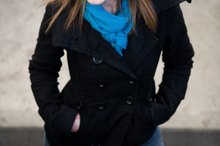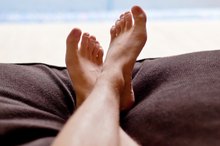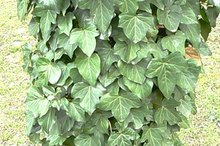What does fact checked mean?
At Healthfully, we strive to deliver objective content that is accurate and up-to-date. Our team periodically reviews articles in order to ensure content quality. The sources cited below consist of evidence from peer-reviewed journals, prominent medical organizations, academic associations, and government data.
The information contained on this site is for informational purposes only, and should not be used as a substitute for the advice of a professional health care provider. Please check with the appropriate physician regarding health questions and concerns. Although we strive to deliver accurate and up-to-date information, no guarantee to that effect is made.
Red Bumps on Shins From Soccer
Safety equipment for soccer players, from youth to professional leagues, includes shin guards. Running around on the pitch will cause you to sweat, and your skin can become irritated underneath the guards. Breaking out in red bumps is not uncommon, although the actual causes may vary. See your doctor to ensure it is not a fungal infection or a serious condition. Making a few adjustments can prevent rashes and irritation from occurring.
Contact Dermatitis
Many rashes and bumps are lumped into the category of contact dermatitis, which is further divided into allergen and irritant contact dermatitis -- ACD and ICD, respectively. Characterized by redness, itching and sometimes scaly dryness, contact dermatitis results from exposure to environmental substances. The pattern of the rash depends on what you come in contact with. An allergy to a specific material -- like the neoprene in shin guards -- can cause red bumps to appear. Sweat is a major cause of ICD as it can mix with lotion, sun blocks or bug sprays, causing irritation and red skin.
- Many rashes and bumps are lumped into the category of contact dermatitis, which is further divided into allergen and irritant contact dermatitis -- ACD and ICD, respectively.
- An allergy to a specific material -- like the neoprene in shin guards -- can cause red bumps to appear.
Dirt and Bacteria
Red, Blotchy Skin on the Forehead From a Hat
Learn More
Shin guards are not always the most-washed part of your soccer attire. Often tossed in a bag after a game or practice, shin guards may not dry out properly. Dirt, bacteria and even mold can grow on the surface that contacts your skin, leaving you at risk for rash and pimples to form. Bacteria and body oils build up in your hair follicles when they are dirty, and these follicles become blocked. Bacteria can grow underneath the plugged follicle, causing your skin to swell and redden.
- Shin guards are not always the most-washed part of your soccer attire.
- Dirt, bacteria and even mold can grow on the surface that contacts your skin, leaving you at risk for rash and pimples to form.
Heat Rash
If you are playing soccer in hot weather or playing a series of games in a day, you will sweat a great deal. The combination of sweat and heat can lead to heat rash. Also called prickly heat, heat rash develops when your sweat ducts are blocked, trapping perspiration under your skin. As a result, your skin can become bumpy or blister and feel prickly or itchy. These bumps can range from superficial blisters to deep, red bumps.
- If you are playing soccer in hot weather or playing a series of games in a day, you will sweat a great deal.
- The combination of sweat and heat can lead to heat rash.
Treatment and Prevention
Itchy Skin Between the Toes
Learn More
The most important treatment for red bumps or rash is to keep the skin clean and dry. If your doctor thinks the rash is contact dermatitis, he may recommend checking for allergies and limiting exposure to potential irritants such as perfumes, fragrances or dyes. In the case of heat rash, cool the skin and try to prevent sweating 2. Wash shin guards frequently and allow them to dry completely. Soaking the surface that contacts your skin in a mild bleach solution can also help kill bacteria or mold. You can also wear a thin sock or rash guard underneath the shin guard to keep it from contacting your skin.
- The most important treatment for red bumps or rash is to keep the skin clean and dry.
- In the case of heat rash, cool the skin and try to prevent sweating 2.
Related Articles
References
- Medline Plus: Acne
- The Merck Manual for Health Care Professionals: Overview of Heat Illness
- Guerra, KC and Krishnamurthy, K. Millaria. StatPearls (internet). Updated December 28, 2018.
- O'connor NR, Mclaughlin MR, Ham P. Newborn skin: Part I. Common rashes. Am Fam Physician. 2008;77(1):47-52.
- Das, S. Millaria. Merck Manual Professional Version. Updated December 2018.
- Cleveland Clinic. Folliculitis. Updated January 22, 2018.
- Behrman RE. Kliegman R, Ed. Nelson Textbook of Pediatrics: 17th ed. 2004. Saunders, An Imprint of Elsevier.
- Habif TP, Ed. Clinical Dermatology: 4th ed. St. Louis: 2004. Mosby, Inc.
- Miller, J. Miliaria. UpToDate. Updated 08/25/15.
Writer Bio
Christy Callahan has been researching and writing in the integrative health care field for over five years, focusing on neuro-endocrinology. She has a Bachelor of Science degree in biology, earned credits toward a licensure in traditional Chinese medicine and is a certified Pilates and sport yoga instructor.








